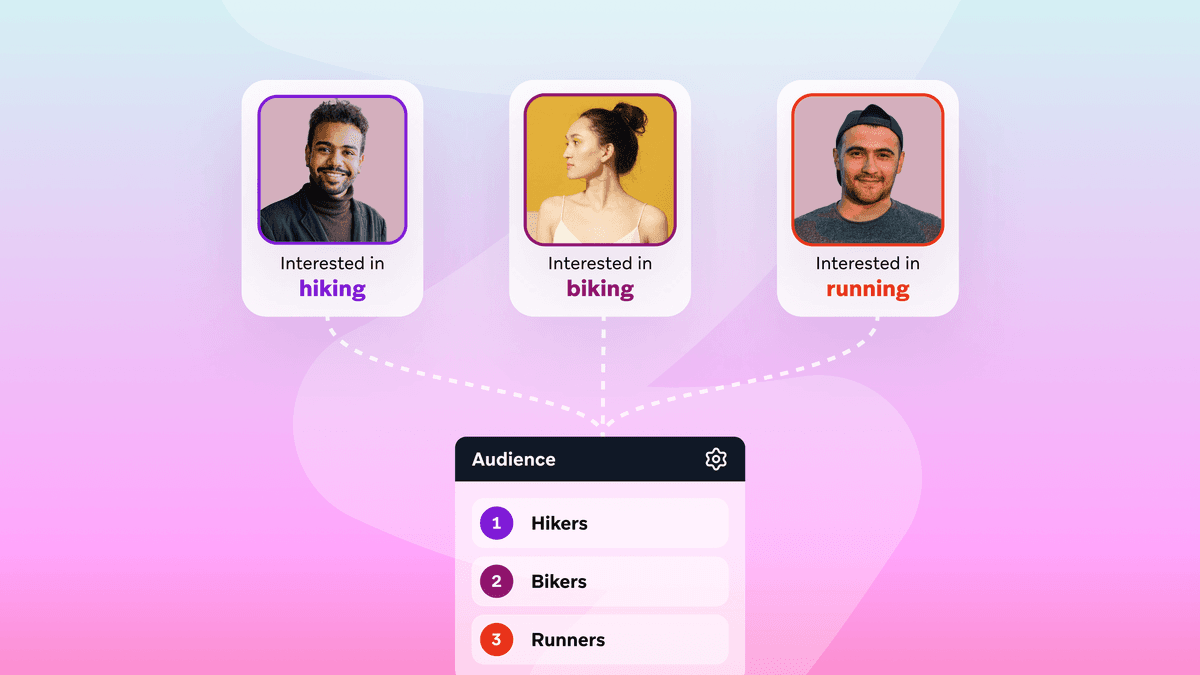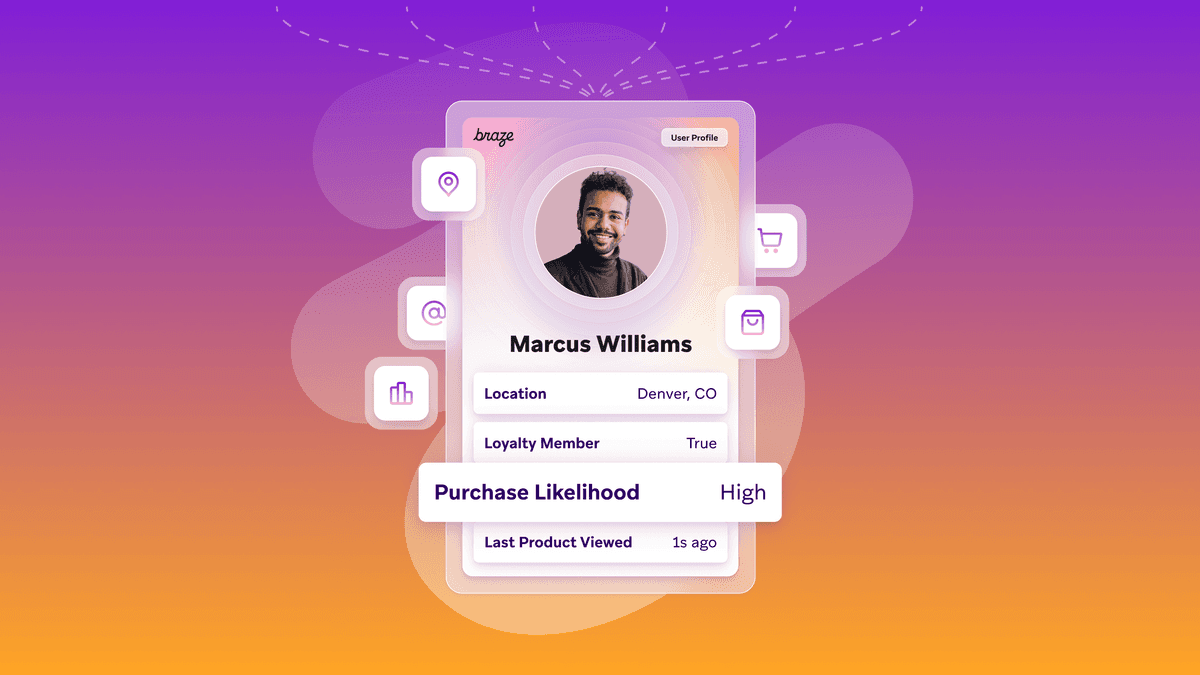How To Beat Today’s Soul-Crushing App Retention Odds
Published on September 23, 2016/Last edited on September 23, 2016/10 min read


Todd Grennan
Managing Editor, Content Marketing at BrazeThings are changing in mobile. As the number of new app downloads begins to stagnate and people increasingly focus their limited time and attention on a small number of favorite apps, it’s no longer enough for brands to put together a top-flight acquisition strategy and wait for the users to roll in. Without a strong retention marketing effort, most of those new users will drift away within days, wasting the time, effort, and money it took to acquire them in the first place.
How do you retain new customers and build a sustainable audience for your brand on mobile? Last week, we explored those questions in the webinar, “5 Ways to Beat Today’s Soul-Crushing App Retention Odds,” part of Appboy’s Relate Live series of digital events.
Today, we’re taking a look at the key points from the discussion, which featured me (Todd Grennan, senior content producer at Appboy) and Jesse Tao, Appboy’s senior manager for business intelligence. We’ll look at why retention matters for your business and how to calculate retention rates, and share five actionable steps that will make holding onto new app users much easier.
Let’s get started.
Why user retention matters
During the webinar, Jesse compared acquiring customers without a strategy to retain them to someone filling a leaky bucket. While it’s possible to fill that bucket so quickly that it stays nearly full even as water runs out the bottom, it’s smarter—and easier!—to patch the bucket, and hold onto the water you already have. “Retention is about keeping those users you worked so hard to win,” Jesse says. “In the long-term relationship you want to build with your users, retention is like going on the second, third, or nth date.”
Jesse’s metaphors aside, user retention can also pay significant financial dividends over time. 70% of companies say that it’s cheaper for them to retain a current customer than to acquire a new one, and brands that are able to boost their retention rate can see an increase in profits by 25–125%.

How to calculate retention rates
Retention may be important, but to keep a close eye on it, you first need to figure out what retention metrics matter the most to your business. The three most popular methods are:
- Classic retention: This looks at how many users returned on a particular day following first use
- Range retention: This looks at how many users return at any point during a specific period of time (for instance one month or one year from first use)
- Rolling retention: This looks at how many users return at any point after a specific day

Classic retention tends to be the most commonly used method for calculating retention rates because it gives marketers a nuanced (yet easy to understand) way of assessing their users’ continued engagement. Under classic retention, if you have 10 users who first use the app on January 1st, and then three of those users log a session on January 2nd, while two of those users open the app on January 3rd, that translates to a Day 1 classic retention rate of 3/10 or 30% and a Day 2 classic retention rate of 2/10 or 20%. (It’s important to keep in mind that each day is calculated independently, so it’s possible that the two people from January 3rd may or may not be among the three who came to the app on January 2nd.)
Range retention smooths out some of the potential noise you can see in classic retention by allowing you to compare retention periods (for instance, the number of customers who came back at any time during week three and week four after first use), but can also remove nuance that’s needed to fully understand how your customers are engaging. With rolling retention, you can easily calculate retention rates and get a snapshot of how retention levels changed after a certain date. However, by it’s nature this rate is constantly changing and can sometimes lead to confusion, for instance counting a customer who engages after a year of being gone as equally engaged as someone who engaged consistently during that time.
Today’s mobile app retention rates
What are the mobile user retention rates like at the average company out there? In one (hyphenated) word: soul-crushing. “Fewer than one in four people who use an app [for the first time] will come back the next day,” Jesse says, citing the classic retention numbers from Appboy’s Spring 2016 Mobile Customer Retention Report. “And about one in two people will come back again any time in the first month. If you’re spending on customer acquisition, that’s like throwing away half of your money.”

Classic retention rates for Android and iOS apps between the day after first use and Day 90
In general, retention rates decline relatively steadily over the first three months following first use. However, while these declines are notable across both Android and iOS and throughout all ten verticals that Jesse’s team examined, Android apps in general and apps from certain verticals—particularly gaming and social/messaging ones—do see stronger-than-average retention rates.
“Is your soul feeling crushed yet?” Jesse says. “Well, it shouldn’t be. Because you can do something about it.”
What brands can do to retain more customers
There are a lot of steps that brands can take to improve their user retention numbers—so many that we’ve dedicated a whole blog post to walking through them. But if you look at retention at a high level, the idea is to prioritize creating and iterating on a thoughtful retention marketing strategy that leverages all the customer data you’re collecting and the user messaging tools at your disposal to communicate effectively with your audience. What that strategy looks like will be different for different verticals and brands, but customer data and customer messaging will almost certainly play a big role.
For marketers who are looking to get started with retention marketing (or who want to make sure they’re not missing out on opportunities to improve their retention rate), we put together a list of five key tactics that are simple, powerful, and can be used by the vast majority of brands to improve their user retention.
1. Prioritize onboarding

Onboarding flows from Domino’s, SoundCloud, and more
One of the biggest factors in whether a new user is retained is that very first session. If you can effectively communicate your app’s value, those new users are likely to come back and try it again. On the other hand, if you don’t sell them then, there’s a solid chance that they may close your app and never open it again.
The best way to make that first session engaging is by putting together a compelling onboarding process that walks new users through your app and shows them how it works in a way that highlights the value that your brand can provide. And if you do it right, the benefits of onboarding won’t stop at nudging customers to log a second session. When customers know how your app works and how it can benefit them, that’s a powerful incentive to keep coming back again and again, driving up retention weeks and months after they complete the onboarding process.
2. Re-engage customers with push notifications

An onboarding re-engagement push notification
To get the full benefit of an onboarding process, you need ways to nudge your new customers to complete it—after all, an effective onboarding campaign is only effective for the users who actually experience it.
Because push notifications can reach customers even when they aren’t using your app, this messaging channel is a powerful tool for re-engaging new users. Research carried out by Appboy has found that brands that use push notifications to re-engage customers who haven’t finished onboarding see a 50% rise in next-day retention and a 71% rise in two-month retention compared to brands that send no campaign at all. That’s a huge difference. And all it takes it a single message.
3. Leverage multiple messaging channels
When it comes to re-engaging new customers, push notifications aren’t the only game in town. Email, in-app messages, and News Feed Cards can all play big roles in supporting stronger customer retention—and brands that have a significant web presence can also use web messaging channels like web push notifications, in-browser messages, and web News Feed Cards to communicate effectively with users.

The Hillary 2016 app’s multiple messaging channels
By taking advantage of a multichannel messaging strategy to engage these customers, you can increase the odds that you reach them through a channel that they prefer and improve the overall effectiveness of your outreach. In fact, Appboy’s research has found that brands that use push notifications together with at least one other messaging channel when sending onboarding re-engagement campaigns see 80% higher next-day retention and—even more impressively—131% higher two-month retention than brands that send no campaigns at all. When you consider how much it costs to acquire a loyal user, that makes multichannel re-engagement campaigns a smart (and cheap!) way to get more out of your acquisition spend.
4. Use send-time optimization to boost engagement

Send-time optimization reaches each user when they’re most interested in engaging
While multichannel messaging can be a powerful way to support stronger customer retention, these direct customer outreach channels can’t do their job if your audience doesn’t engage with the messages you send. And with the glut of notifications that many customers receive from the apps they use, breaking through can be difficult.
Thankfully, there’s send-time optimization—a simple, impactful tool that can do a lot to boost customer engagement with the messages you send. It works by taking advantage of the data that your brand collects on your users behavior to identify the windows of time when each recipient is most likely to engage with your messages, then deliver future messages during those high-engagement periods. And our research has found that taking advantage of send-time optimization increases user engagement by 25%, compared to messages sent using time-based scheduling.
5. Take advantage of message personalization

Message personalization can significantly boost conversions
Once you’ve got your new users engaging with your messages, the next step is to encourage them to take action. One of the most effective ways to do that is by individually customizing the outreach you send using personalization.
Customers want to feel understood. So when brands personalize a push notification by adding a customer’s first name or customize an email by automatically mentioning items the customer previously purchased or content they viewed, it can do a lot to motivate that user to take action. In fact, research carried out by Appboy has found that using this kind of message personalization in your outreach increases conversions by 27%.
What now?
To get the full benefit of last week’s webinar, check out the complete retention presentation below, or watch the video.
5 Engagement Marketing Tips to Beat Today’s App Retention Odds from Braze (formerly Appboy)
If you’re interested in digging deeper into retention and trying out additional campaigns and more advanced tools, take a look at our piece on retention marketing and how to master it.
Related Tags
Be Absolutely Engaging.™
Sign up for regular updates from Braze.




